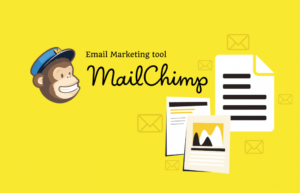Creating and maintaining a robust email list is not just a good-to-have, it’s a must-have for any business or organization aiming to elevate its online presence. Mailchimp, a leading email marketing platform, offers an arsenal of tools designed to manage your email lists and engage with potential clients or customers effectively. One of the most crucial features of the Mailchimp marketing platform is the ability to create audience-segmented lists of contacts. This article provides a detailed, step-by-step guide on how to create a new audience in Mailchimp.

What is an Audience in Mailchimp?
An audience in Mailchimp refers to your email list—a foundational element of Mailchimp email marketing. But this isn’t just a static list; it’s a dynamic entity. In Mailchimp, you can segment your contacts based on various criteria such as geography, customer behavior, or past interactions with your Mailchimp email campaigns. This segmentation enables you to send tailored messages to specific groups of people, making your Mailchimp email marketing more targeted and effective.
Why is Creating a New Audience Important?
Understanding the need to create new audiences in Mailchimp helps boost the effectiveness of your Mailchimp email campaigns for various reasons:
- Segmentation: This allows you to break down your list into smaller groups for specialized messaging.
- Targeting: Enables the delivery of relevant content to specific audiences.
- Data Management: Eases the management of your extensive contact list.
- Compliance: Ensures you’re following email marketing laws by enabling opt-in and opt-out options for your audiences.
Steps to Create a New Audience
Log In or Sign Up
Your journey with Mailchimp email marketing starts by either logging into an existing account or signing up for a new one. If you’re new, the signup process is straightforward and offers a variety of plans to suit different needs. You may also like this Tracking Business Case With Cost Benefit Analysis and Project Controlling
Navigate to the Audience Dashboard
- Once logged in, look for the “Audience” option in the left-hand sidebar and click on it.
- This will take you to the Audience dashboard where you can view, manage, and analyze your existing audiences.
- Here, click on the “Create Audience” button, usually located at the top right corner of the screen.
The Creation Process
- You will encounter a dialog box asking for details such as:
- Audience name
- Default “From” email address
- Default “From” name
- Reminder of how people got on your list
- After filling in these details, click on the “Save” button, and voila! You’ve successfully created a new audience in Mailchimp.
Customizing Your Audience
Mailchimp offers a variety of ways to personalize your audience:
Adding Tags
Tags are custom labels you can apply to your audience members based on any criteria you like, making future campaigns more organized.
Importing Lists
If you have an existing list elsewhere, you can import it into Mailchimp. The platform supports various formats, such as CSV and TXT files, and even direct imports from other services.
Creating Segments
Segments are another level of organizing your audience based on set criteria like engagement level, geography, or any custom field you’ve added to your audience.
Tips for Managing Your Audience
- Regularly Update Your List: Contacts get outdated, and people’s preferences change. Keep your lists up-to-date to maximize the impact of your Mailchimp email marketing efforts.
- Segment Wisely: Use Mailchimp’s segmentation features effectively to send the right messages to the right people.
- Analyze and Optimize: With Mailchimp’s analytics, track metrics like open rates, click rates, and engagement levels for your Mailchimp email campaigns, and adjust your strategy as needed.

Utilizing Mailchimp Automation Tools and Features
Auto-responders
Mailchimp offers powerful auto-responder features. You can set emails to be sent out automatically based on various triggers such as user behavior or other events.
RSS-to-Email
With Mailchimp’s RSS-to-email feature, you can automatically send out updates whenever you update your blog or news section.
Behavioral Triggers
Mailchimp automation tools also allow you to send emails based on user behavior on your website, further personalizing the customer journey.
How to Use Mailchimp Landing Pages Effectively
Mailchimp landing pages are another essential tool that complements your Mailchimp email campaigns. These are standalone web pages that serve a single and focused purpose, like a sign-up form or a special offer, specifically designed to convert visitors into leads or customers.
- Synchronization: You can seamlessly integrate your Mailchimp landing pages with your Mailchimp email campaigns for a unified marketing effort.
- Design and Aesthetics: Mailchimp offers various customizable templates to ensure that your landing pages are as engaging as your emails.
- Analytics: The same analytics tools that help you monitor your email campaigns can be used to gauge the effectiveness of your Mailchimp landing pages.
Conclusion
Creating a new audience in Mailchimp is more than just a task—it’s an essential step to unlock the full potential of your Mailchimp email marketing efforts. Using the platform’s rich set of features, including Mailchimp automation tools and Mailchimp landing pages, you can craft compelling and effective email campaigns tailored to different audience segments. By doing so, you will not only stay ahead in the dynamic landscape of digital marketing but also drive real results that matter to your business.


